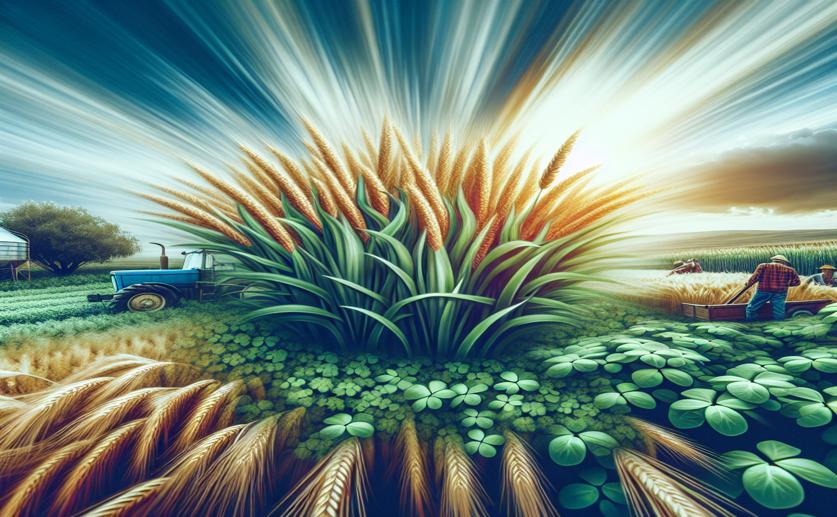
Boosting Crop Yield and Soil Health in Alfalfa and Barley with Intercropping
Jim Crocker
3rd March, 2024

Image Source: Natural Science News, 2024
Key Findings
- In arid regions, intercropping alfalfa with sea barley improves crop growth and yield under salty conditions
- This farming method enhances plants' nutrient absorption, helping them cope with salt stress
- Intercropping also reduces soil salinity, making the land better for farming
AgricultureSustainabilityPlant Science
References
Main Study
1) Improving productivity and soil fertility in Medicago sativa and Hordeum marinum through intercropping under saline conditions.
Published 1st March, 2024
https://doi.org/10.1186/s12870-024-04820-3
Related Studies
2) Assessing alfalfa (Medicago sativa L.) tolerance to salinity at seedling stage and screening of the salinity tolerance traits.
3) Adaptation Strategies of Halophytic Barley Hordeum marinum ssp. marinum to High Salinity and Osmotic Stress.
4) Improvement of physiological indices and biological yield by intercropping of Kochia (Kochia scoparia), Sesbania (Sesbania aculeata) and Guar (Cyamopsis tetragonoliba) under the salinity stress of irrigation water.
5) Variability in response to salinity stress in natural Tunisian populations of Hordeum marinum subsp. marinum.



 2nd March, 2024 | Greg Howard
2nd March, 2024 | Greg Howard